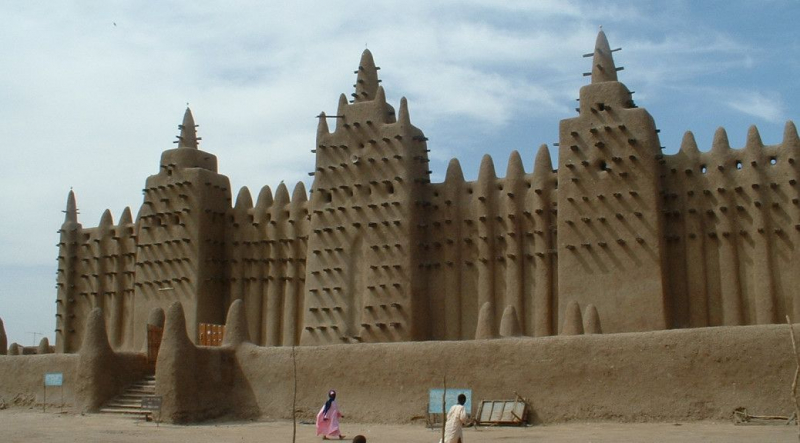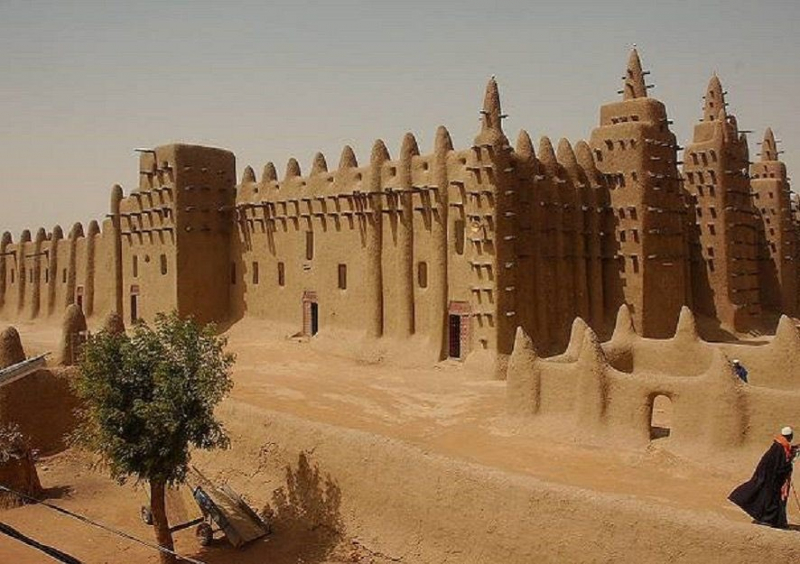Djinguereber Mosque, Timbuktu
The Djinguereber Mosque in Timbuktu, Mali, was established in 1327 and is referred to as Djingareyber or Djingarey Ber in several languages. It was designed by Abu Ishaq Al Saheli, who received 200 kg (40,000 mithqals) of gold from Musa I of Mali, the Mali Empire's emperor.
The Djingareyber Mosque is entirely made of earth and organic materials such as fiber, straw, and wood, except for a small section of the northern facade that was reinforced in alhore (limestone blocks, also widely used in the rest of the town) in the 1960s and the minaret, which was also built in limestone and rendered with mud. It features three inner courts, two minarets, twenty-five rows of pillars aligned east-west, and a 2,000-person prayer space.
Djinguereber is one of four madrassas that make up Timbuktu's University. In 1988, it was added to the list of UNESCO World Heritage Sites, and in 1990, it was deemed endangered owing to sand encroachment. The Aga Khan Trust for Culture began a four-year project to restore and renovate the Mosque in June 2006, and it is being carried out and funded by the Aga Khan Trust for Culture.
Location: Timbuktu, Mali







